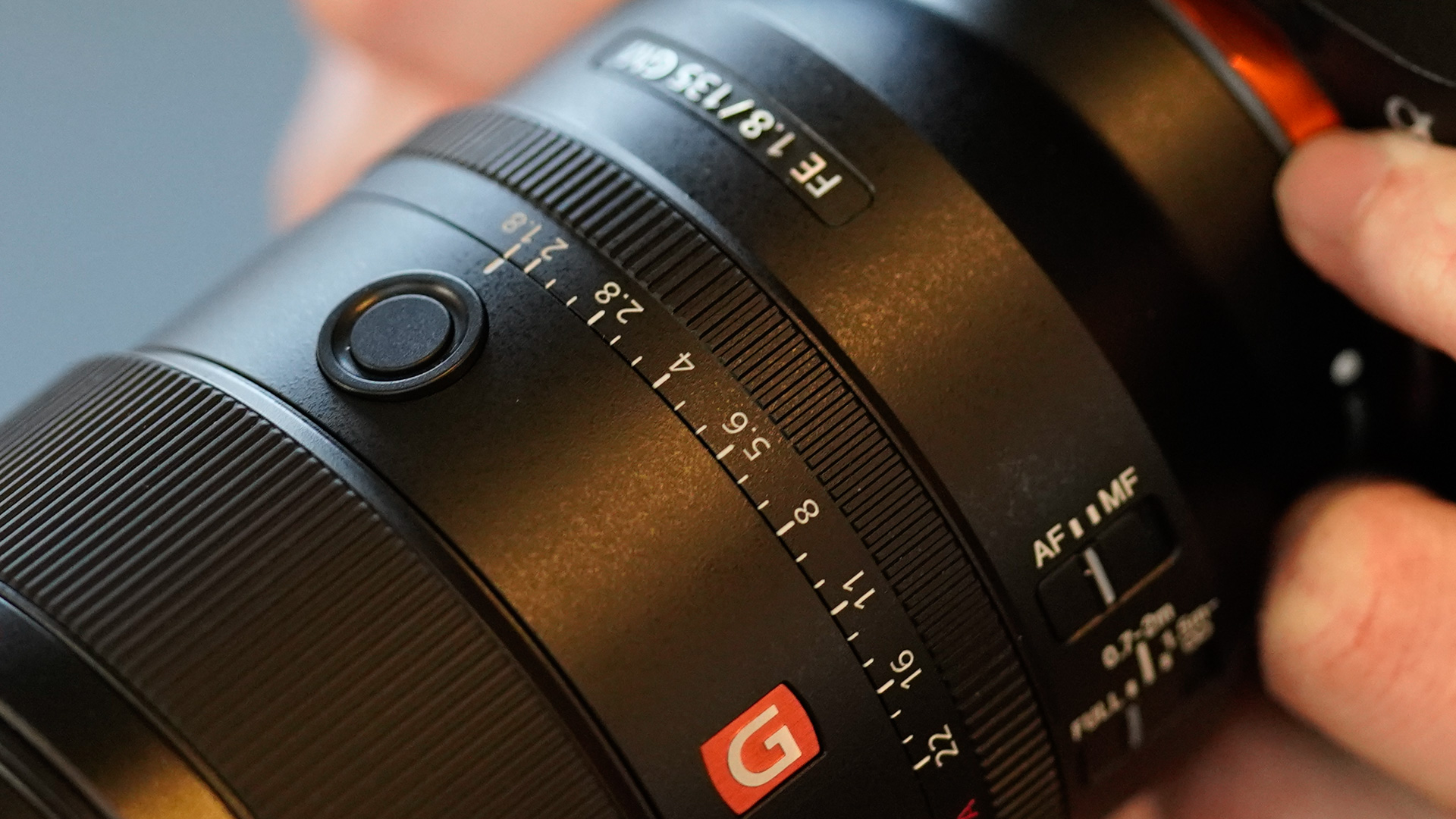Early Verdict
There's no doubting the quality of the FE 135mm f/1.8 GM. It's clearly capable of delivering very sharp images at even its widest apertures – although you pay quite steeply for the privilege.
Pros
- +
Excellent sharpness, even wide open
- +
Top-quality build
- +
Smooth AF performance
Cons
- -
Very expensive next to some rivals
- -
Cat's eye bokeh at f/1.8
- -
Somewhat stiff focus switches
Why you can trust TechRadar
The ninth addition to Sony's premium G Master series, the FE 135mm f/1.8 GM is likely to interest many portrait, wedding, event and live performance photographers in need of a fast telephoto prime lens.
With four focusing motors on board, a de-clickable aperture ring, weather resistance and a number of elements with special optical properties inside, there's plenty on top of that long focal length/wide aperture combination to get excited about.
We got our hands on a sample prior to the official announcement to get a better idea of what it will bring to today's Alpha users.
Features
- Extreme aspherical (XA) element
- Four XD linear AF motors
- 11-blade circular aperture
Optically, the Sony FE 135mm f/1.8 GM features a new design that makes use of a Super ED element towards the front and ED glass behind this, both helping to keep chromatic aberration to a minimum. An Extreme Aspherical (XA) element positioned directly behind these, meanwhile, should help combat spherical aberration.
There's no optical image stabilization in the lens itself, but there's little need for this when you consider that Sony's current Alpha cameras feature their own SteadyShot systems to do the same thing.
Focal length: 135mm
Mount: Sony E
Filter size: 82mm
Max aperture: f/1.8
Minimum focusing distance: 0.7m
Maximum magnification: 0.25x
Dimensions: 89.5 x 127mm
Weight: 950g
The focusing system is fairly comprehensive, composing two dual XD linear motors (so four in total), with two at the front and two at the rear. Focus is internal, and you can limit the range if you need to with the focus limit switch on the side of the lens.
Sony also promises nicely round and natural bokeh, partly through the 11-blade diaphragm, but also the XA element. Eleven blades is pretty generous when you consider that many other lenses only contain seven or nine (although, of course, many other lenses don't cost quite as much as this one).
Sign up for breaking news, reviews, opinion, top tech deals, and more.
Build quality and handling
- Magnesium alloy chassis
- Dust- and moisture-resistant design
- Physical aperture ring
As we'd expect for a 135mm f/1.8 lens designed to partner with a full-frame camera, this isn't a small optic by any measure. That said, it doesn't feel unbalanced when mounted on the A7R III body, nor too lengthy. Its weight of 950g is roughly as we'd expect, being around 45g lighter than Sony's previous Sonnar T* 135mm f/1.8 ZA.
The aperture ring clicks positively when turned, and it's great to see that its click can be disabled via a switch at its side. The focus and focus-limit switches on the side are a little stiff, and somewhat flush with the barrel, although this stiffness isn't uncommon with newer samples, and it does at least mean they won't be as easy to knock out of place without you realizing it.

One feature of the FE 135mm f/1.8 GM that will please those wanting to use manual focus is the linear response from the focusing ring. This provides a far nicer user experience than the focus-by-wire-type focusing mechanism that's common among lenses designed for mirrorless cameras, and it means there's no disconnect between turning this ring and the lens responding. Its depth and rubber finish also make it pleasing to grip between the fingers.
Autofocus appears to work very promptly. Certainly in good light you can quickly switch focus between near and distant objects, and this happens more smoothly than you might expect too. Focusing speeds noticeably lengthen when light levels dip a little, although we shouldn't expect focus to happen as quickly when the scene is more problematic.
Performance
- Excellent sharpness, even at f/1.8
- Slight cat's eye bokeh wide open
- Great longitudinal CA control
We'll give the FE 135mm f/1.8 GM a proper workout once we get to spend more time with it, but our initial impressions are certainly very positive. We were able to use the lens with the A7R III, and we were very impressed with just how clearly the lens was able to resolve fine detail such as eyelashes at f/1.8; the sample images below give you an idea of exactly how well the lens does here.
Disabling optical corrections in-camera showed there to be a little vignetting at the widest apertures, although this isn't exactly frowned upon for a lens that will most likely be used for portraiture. As the comparison images below show, bokeh can take on a noticeable cat's eye shape, particularly towards the peripheries, although this does improve once you stop down from the widest few aperture settings.
Bokeh itself looks very nice, and without noticeable longitudinal chromatic aberration, although a little ringing can be seen towards the peripheries, particularly once you stop down to f/2.8-4.

Click here to see the full-size image

Click here to see the full-size image

Click here to see the full-size image

Click here to see the full-size image

Click here to see the full-size image

Click here to see the full-size image

Click here to see the full-size image

Click here to see the full-size image

Click here to see the full-size image

Click here to see the full-size image

Click here to see the full-size image

Click here to see the full-size image

Click here to see the full-size image
Verdict
As a G Master lens, there's no questioning just what the Sony FE 135mm f/1.8 GM packs, and how it performs. This is clearly a lens that's designed to a high standard, and one that performs very well when partnered with modern Sony mirrorless cameras.
Sharpness is superb wide open, and control over aberrations appears to be very good. As we'd expect for such a lens, vignetting is visible wide open, and that also has an effect on the character of bokeh. But certainly once you stop down a little, bokeh becomes nice and round, and shading in the corners lifts.
Predictably, perhaps, the main gripe we have at the moment is with the price of the FE 135mm f/1.8 GM. With an RRP of £1,750 / $1,900, it's considerably more expensive than similar lenses, such as the Sigma 135mm 1.8 DG HSM Art, which is also available for E mount users.
Clearly this kind of performance comes at a price, but we'll be keen to see how it performs in comparison to more keenly priced rivals. We'll know more once we've put it through our full review process, so stay tuned.
What is a hands on review?
Hands on reviews' are a journalist's first impressions of a piece of kit based on spending some time with it. It may be just a few moments, or a few hours. The important thing is we have been able to play with it ourselves and can give you some sense of what it's like to use, even if it's only an embryonic view. For more information, see TechRadar's Reviews Guarantee.
